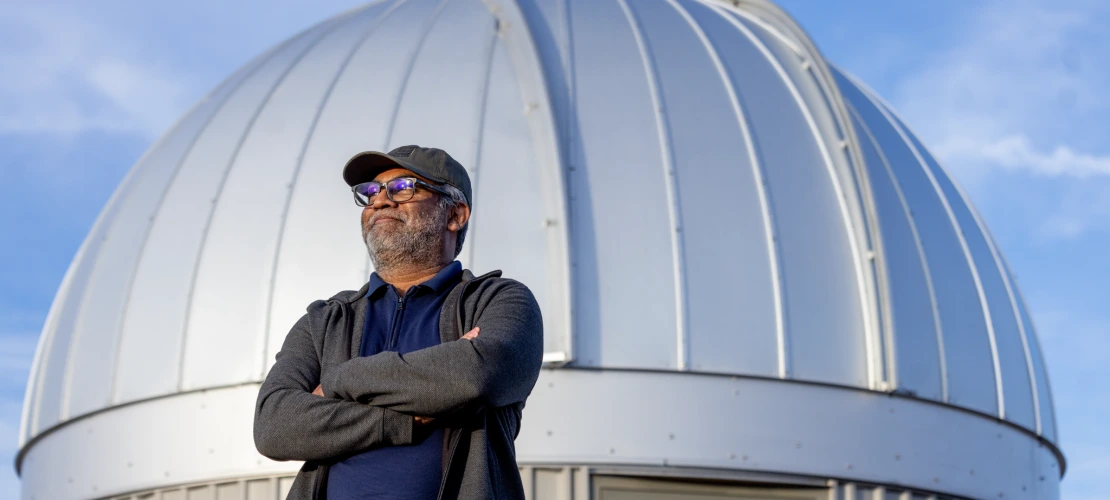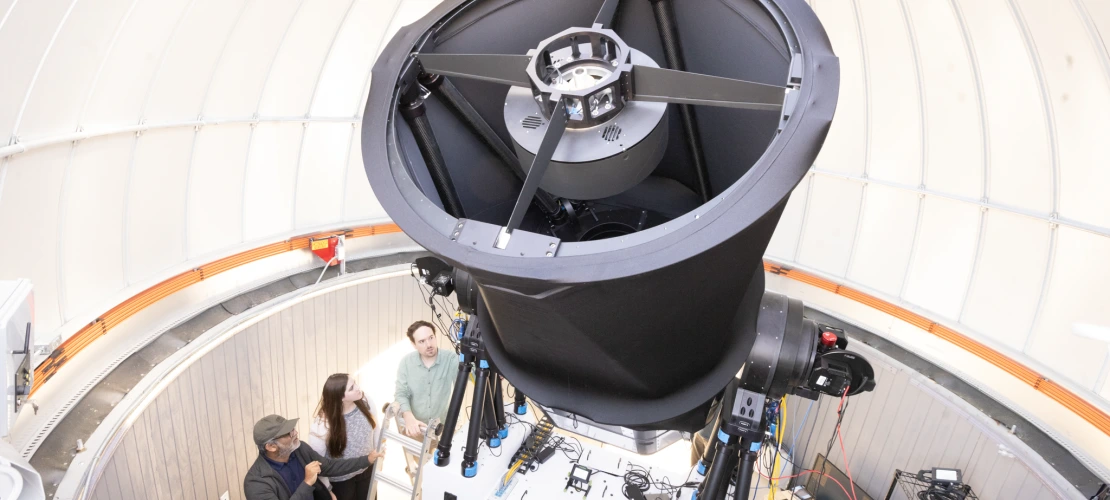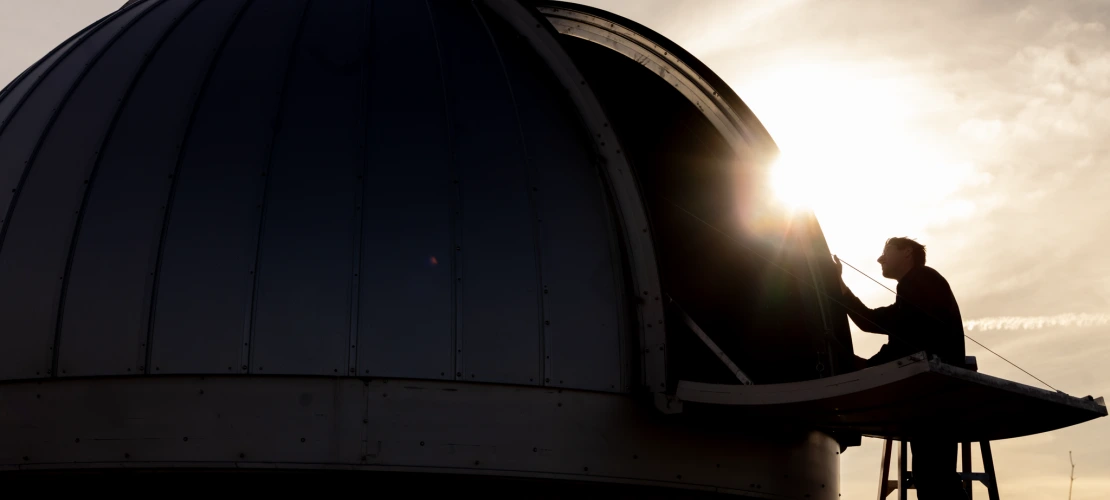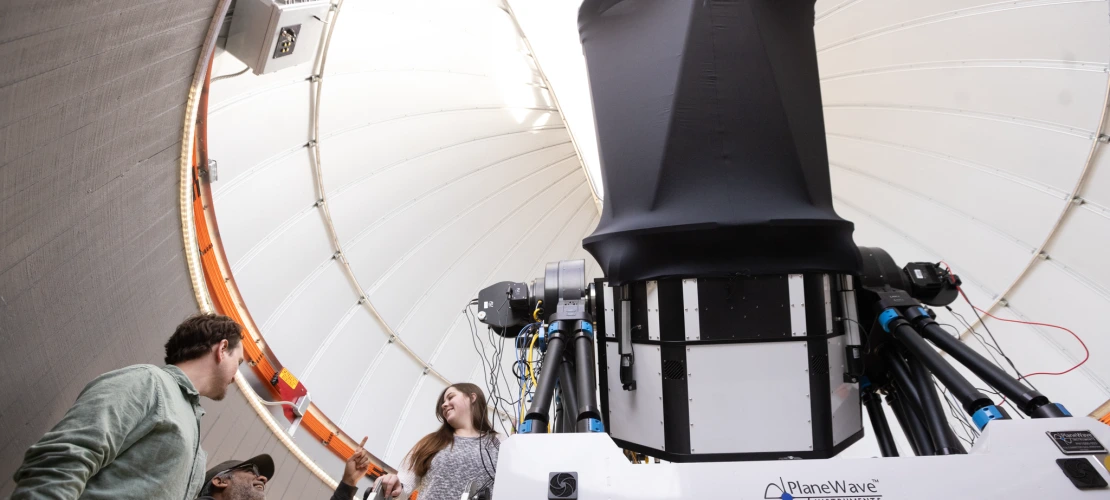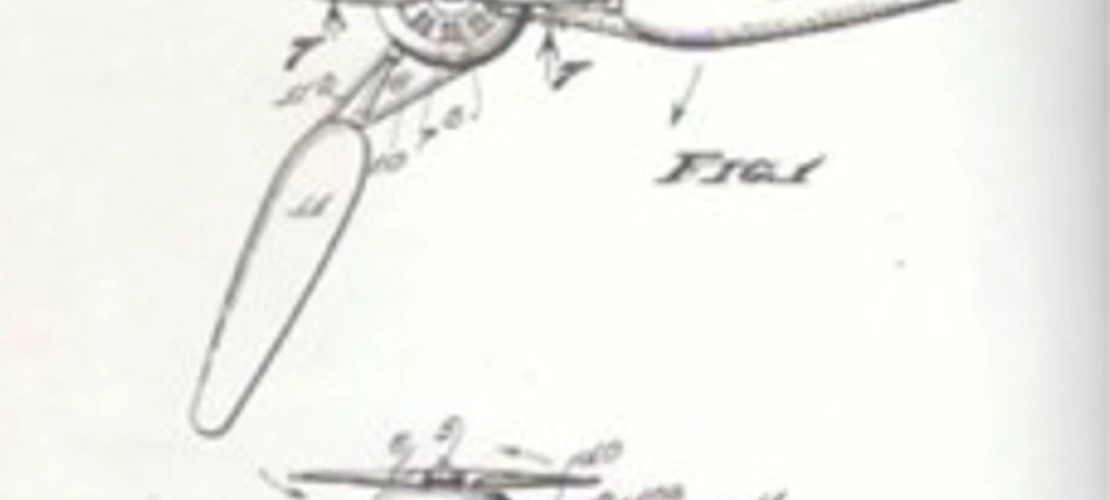Couple’s tribute gift supports Space4 research
Mike and Margy West honor her late father’s legacy by supporting Space4’s national security and sustainability research.

From left: information science undergraduate Rebecca Lersch, aerospace engineering undergraduate Andrew Avalos, Space4 Center director and professor of planetary science Vishnu Reddy, and software engineers Tanner Campbell and Adam Battle.
Chris Richards
It all started with a deal. If 16-year-old Glen E. McPherren helped wash a few planes at an airfield in Lincoln, Nebraska, he could ride in one.
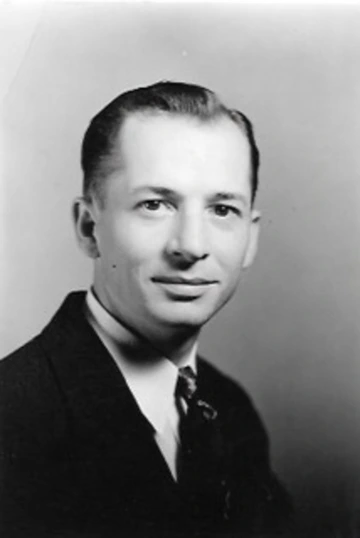
Glen E. McPherren
Photo provided by Margy West
It was during that plane ride in the early 1920s that McPherren found his calling. From then on, he spent every spare second at the airfield. Over time, he went from cleaning planes to flying them, from flying planes to fixing them, and ultimately to learning how to build them. According to Margy West, McPherren’s daughter, during those early years he befriended aviation pioneers like Charles Lindbergh, who made the first nonstop solo flight across the Atlantic Ocean, and barnstormer Bud Gurney.
But McPherren’s fascination with how things worked and could be improved wasn’t really new. As a child, he had learned how to use tools from his uncle George. By the time he was 16, he was apprenticing as a watchmaker. He applied what he learned from his uncle and watchmaking to aviation. In the early 1930s, he designed and patented a vertical takeoff aircraft.
Although he never attended college, due to limited time and finances, McPherren’s curiosity and ability to work with his hands propelled him to the forefront of the aviation industry. He eventually became a senior design engineer at Convair, where he was entrusted with highly classified projects during World War II and the Cold War. He created an antivibration mechanism for the B-24 aircraft and a synchronizer that prevented machine gunners from accidentally cutting off the propeller of their own aircraft, and he contributed to the B-36 aircraft, which was designed to carry nuclear bombs.
“A lot of his ideas came in dreams,” West says. “He’d wake up in the middle of the night, have an idea, write it down, and then in the morning he would go to work. I think he was kind of one in a million.”
West remembers her childhood as being magical. Once, her father cut a hole in the family’s roof to test lasers. “The bright red light shooting out of our roof at night caused quite a neighborhood stir,” West says.
Another time, he built a jet engine in their backyard using a dishpan.
“I thought my dad was like everybody else’s dad,” West says. “But actually, he wasn’t, and in such a delightful way.”

McPherren made many models, which he used to test ideas.
Photo provided by Margy West
In the late 1970s, shortly after McPherren passed away, a young boy named Vishnu Reddy developed a passion for working with his hands.
“For a majority of my early childhood, we didn’t have electricity,” Reddy says as he recalls growing up near a small island in India. “That’s literally the reason why I got into astronomy: because there was nothing better to do after dark than look at the stars.”
As a child, he began building telescopes, later moving to optics with the help of mentors. Reddy’s natural curiosity eventually led to a successful career in planetary defense, where he specialized in using infrared spectroscopy to track potential threats to Earth, such as colliding space debris.
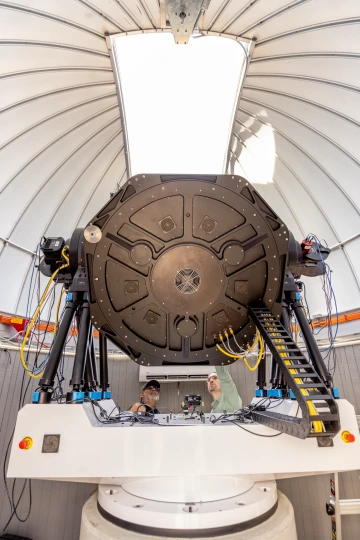
Vishnu Reddy (left) and Adam Battle
Chris Richards
Now, at the University of Arizona, Reddy leads a team of students at the Space Domain Awareness Observatory. The team works at Biosphere 2, building a specialized telescope to monitor objects orbiting the moon. The telescope is the newest project of Space4 Center, which brings together interdisciplinary researchers to develop tools and resources for responsible space discovery.
“Since Apollo, there’s been a renewed interest in going back to the moon and spending time there. We want to make sure that we keep track of all the things around the moon,” Reddy says. “We want to make sure that somebody else’s satellite doesn’t run into our satellite or vice versa. We want to keep the orbital space around the moon in a pristine condition.”
For undergraduate students involved in constructing the telescope, this project offers a rare, hands-on opportunity to apply their academic knowledge to real-world challenges.
During a visit to the Space Domain Awareness Observatory, Margy West and her husband, Mike West ’66, were struck by the similarities between Reddy’s work and her father’s legacy. Both were brilliant thinkers.
“Margy’s father was a much greater man than I am. But we share a common trait,” Reddy says. “He was also a tinkerer. We came from humble beginnings, and we learned how to use our hands.”
That visit marked the beginning of a special relationship. Inspired by Space4’s mission, the Wests made a generous gift to support the project. One particularly meaningful part of the gift is the inclusion of a camera that once belonged to Margy’s dad.
It was never used for its original purpose, as part of a device McPherren designed for U2 spy planes during the Cold War. But now, 65 years later, Reddy plans to integrate it into Space4’s telescope.
“Optics don’t get old, so to speak,” Reddy says. “We can use a lens made 200 years ago today if the lens is good. There is no such thing as an outdated optic.”
The Wests are helping ensure that future generations of talented tinkerers will have the tools and experience needed to maintain the safety and sustainability of our Earth-moon system.
“Dad would be delighted that his camera will be used for this generation’s missions,” West says. “Even if it’s only his name on a plate attached to Dr. Reddy’s new telescope, [McPherren] is going to college.”


